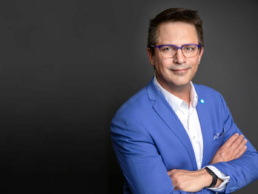“Everyone deserves a great love story.”
It’s a line from my favourite movie, Love, Simon. Simon is an upper-middle-class white kid from the suburbs who’s “just like you,” except he’s got a big secret—nobody knows he’s gay.
I love this movie for so many reasons. It’s got a great soundtrack by Bleachers, it celebrates family and friendship, and it’s a classic coming-of-age story.
But that’s not why Love, Simon stole my heart. I love this movie because Simon is just like me.
Let me explain.
Simon’s got it pretty good. He’s got great parents who love and accept him, he gets along with his little sister, and gets up to pretty normal teenager stuff with his high school friends. Everyone around him, from family to friends to teachers to his suburban Georgia neighbourhood provides him with a pretty safe, privileged position, all things considered.
But as any LGBTQ+ person will tell you, even when you’re in a safe space, coming out is still terrifying. And Simon’s coming out story is at the heart of the movie.
For me, it took a year between when I figured out I liked guys and I could summon the courage to come out to my best friend—even though I had a pretty safe space myself.
Doubts always creep in. What if my relationships with my family changes? What if my friends don’t understand? What if I never find any guys who like me back?
What if I don’t belong anymore?
The movie made an impact on me because Simon’s story was the first movie I’d seen that told a story like this—where I felt like my story of fear and uncertainty was told on the big screen.
Simon’s story made me feel like I belonged. And that’s what all great stories do.
When your story gets told like that, it’s powerful—and it’s why telling diverse stories in popular culture matters. We all want to feel like there’s a place for us in the world that can be celebrated by a big audience.
Telling a powerful story like this isn’t easy. The process starts with listening. To hear a story like this, you’ve got to be curious about someone—curious enough to ask them questions, build trust with them, and get to know them.
As you go through that process, they’ll share their hopes with you, inspire you with their dreams, and help you understand their fears. Then, once you’ve listened to all that, you’re ready to tell their story.
In every narrative we write for clients, there comes the moment when we present our work. We always know if we got it right because the client will say something like, “Wow, you really get us!”
That means we’ve told their story well.
Because we took the time to listen and told a story that made them feel like they’d been seen—like they belong.
Jordan Ray
Principal and Senior Narrative Consultant for Curious Public. Jordan is a communications and generative AI expert.

